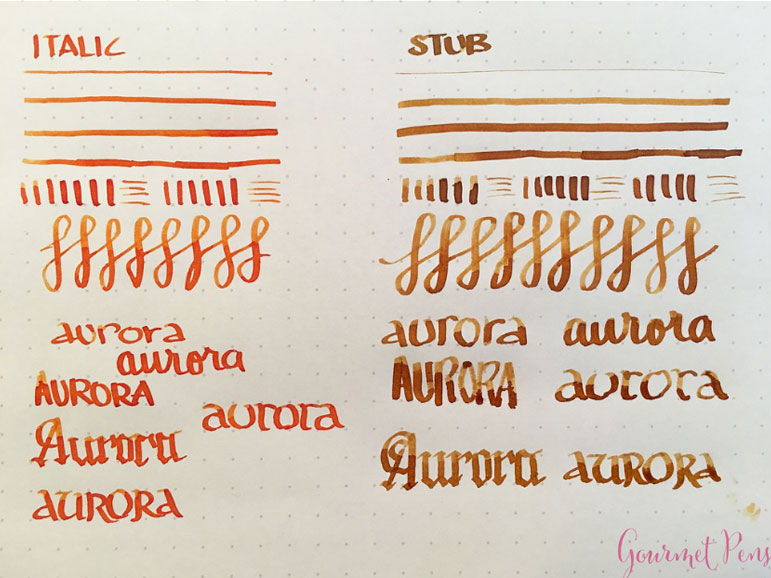Menu

0
Your Cart is Empty

Your Cart is Empty
March 22, 2018 3 min read
A key decision for fountain pen lovers is choosing the correct nib.
The way of writing is a unique and personal characteristic and the nib will determine how our fountain pen writes.
The nib is the most iconic element of a fountain pen. It is the fixed end that makes ink flow from the inside of the pen allowing us to write and draw.
In order to choose the right nib for us we have to consider four main factors: Size, materials, shape and flexibility.
The nib size will have a great impact on our handwriting. Generic nib sizes are Extra Fine (EF), Fine (F), Medium (M) and Broad (B).

Fine nibs are advisable for people with small and clear handwriting. Their fine lines prevent letters from joining. It is the favorite of many when using a fountain pen for daily writing as its finish is more similar to a pen or rollerball.
A Medium or Broad nib is recommended for those with long hand writing. Its tip is usually wet, allowing the user to adapt easily to a quicker writing rhythm. It is the ideal nib for those to want a fountain pen for signing, calligraphy or showcasing inks.
However, it is important to keep in mind that Japanese fountain pens have a slightly finer line than European. This is because Japanese handwriting is thicker and more complex than European, requiring a finer and more precise nib.

Learn more about the difference between Japanese and European nibs
Moreover, there are brands like Nakaya and Aurora that offer special nibs (oblique or stub, italic...).

The nib's material is less important when choosing a fountain pen. Most popular materials are stainless steel, gold and ruthenium. Nonetheless, while we can't affirm materials determine softness and nib performance, each have some characteristics that can condition our election.
Steel is one of the most modern and popular materials in fountain pens. This is because it allows great quality at an economic price. These nibs are really resistant but not as flexible as gold nibs.
Gold is the most valued material by collectors. These nibs are known for their flexibility and great resistance on all kinds of materials.
When its rhodium plated gold, the plating makes their color turn into silver making them even more resistant.
On another hand, bicolor nibs share the resistance and flexibility of a gold nib adding amazing designs and finishes in gold and white gold.
Ruthenium is another popular material when decorating fountain pens. It hardens, strengthens and achieves a greater resistance in the nib being one of the most resistant materials when avoiding corrosion.
Nibs have different sizes in order to create different lines. The majority of nibs share a round tip, creating uniform lines regardless of the nibs direction or orientation with the paper.
Another popular shape is the italic, also known as stub. The nib of italic nibs can be distinguished as it is broad and flat. Italic nibs create vertical broad flat lines and horizontal thin lines. They are perfect for calligraphy but can also be used to give a special touch to our daily writing. They require a little more practice and precision, but are worth the shot.
Flexibility refers to how nib tines open, depending on our pressure, creating variations in the lines' broadness. Flexibility is useful for the creation of calligraphy, however for daily writing the majority of fountain pen lovers choose firm nibs.
Sign up to get the latest on sales, new releases and more …